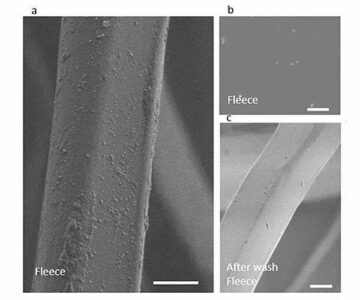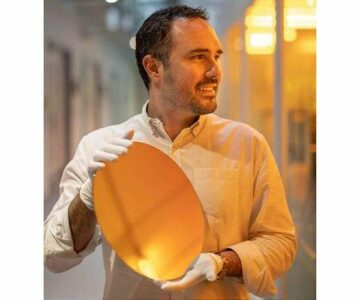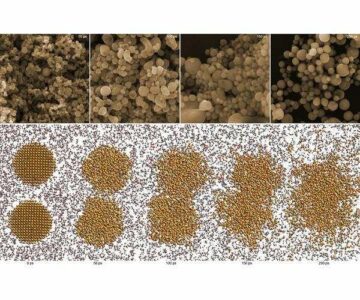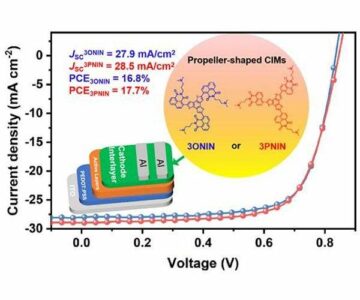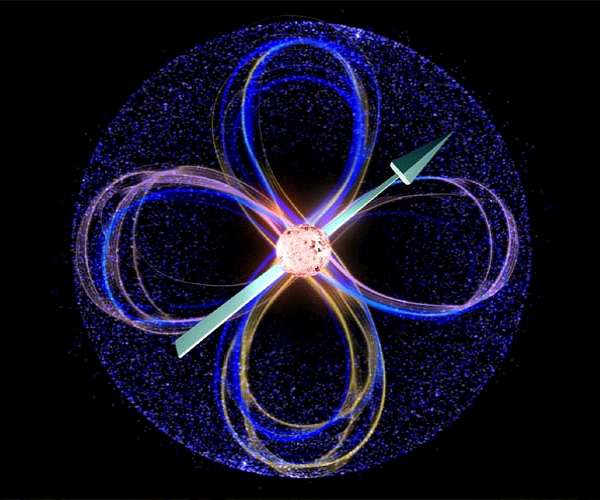
New Advances in Voltage-Controlled Magnetization Switching for Spin-Orbit Devices
by Erica Marchand
Paris, France (SPX) Apr 11, 2024
Researchers from CIC nanoGUNE’s Nanodevices group, along with their international partners, have successfully demonstrated voltage-based magnetization switching in magnetoelectric spin-orbit nanodevices. This achievement marks an important advancement in the use of magnetoelectric spin-orbit (MESO) logic as a potential cornerstone for future low-power technologies surpassing traditional CMOS systems.
The research, outlined in a recent publication in Nature Communications, explores the use of magnetoelectric materials that display multiple ferroic properties concurrently. Notably, bismuth ferrite (BiFeO3), known for its robust antiferromagnetic and ferroelectric relationship at ambient temperatures, has emerged as a significant material in this context. The integration of ferroelectricity and ferromagnetism within these materials allows for magnetization control by toggling the ferroelectric polarization via an electric field, without the need for magnetic fields.
The journey towards practical multiferroic devices has been complex, characterized by limited breakthroughs. However, the proposed MESO logic approach utilizes a novel spin-based nanodevice paired with a multiferroic element. Here, magnetization is controlled solely through voltage pulses and read electronically via spin-to-charge current conversion (SCC) methods.
The experimental validation involved fabricating SCC nanodevices on BiFeO3 substrates and investigating the reversible magnetization of ferromagnetic CoFe through advanced microscopy techniques. This was complemented by all-electrical SCC testing, where the reversal of CoFe magnetization was induced by voltage pulses, with the resulting magnetization state influencing the output voltages observed in SCC readings.
These findings underscore the feasibility of magnetization control using voltage at room temperature, facilitated by the interaction between BiFeO3 and CoFe for writing processes, and between CoFe and Pt for reading. This foundational research not only supports the operational viability of such nanodevices but also propels forward the development of future spin-based logic and memory solutions that prioritize energy efficiency.
While challenges persist in enhancing the predictability and uniformity of switching behaviors, particularly concerning the textural properties of BiFeO3, the presented results constitute a major step towards realizing the full potential of voltage-controlled magnetization in nanoscale devices.
Research Report:Spatiotemporal Data Augmentation of MODIS-Landsat Water Bodies
Related Links
CIC nanoGUNE
Computer Chip Architecture, Technology and Manufacture
Nano Technology News From SpaceMart.com
- SEO Powered Content & PR Distribution. Get Amplified Today.
- PlatoData.Network Vertical Generative Ai. Empower Yourself. Access Here.
- PlatoAiStream. Web3 Intelligence. Knowledge Amplified. Access Here.
- PlatoESG. Carbon, CleanTech, Energy, Environment, Solar, Waste Management. Access Here.
- PlatoHealth. Biotech and Clinical Trials Intelligence. Access Here.
- Source: https://www.spacedaily.com/reports/New_Advances_in_Voltage_Controlled_Magnetization_Switching_for_Spin_Orbit_Devices_999.html
- :has
- :is
- :not
- :where
- 11
- a
- achievement
- advanced
- advancement
- advances
- allows
- along
- also
- Ambient
- an
- and
- approach
- apr
- architecture
- AS
- At
- been
- behaviors
- between
- breakthroughs
- but
- by
- challenges
- characterized
- chip
- Communications
- complemented
- complex
- concerning
- constitute
- context
- control
- controlled
- Conversion
- cornerstone
- Current
- data
- demonstrated
- Development
- Devices
- Display
- efficiency
- Electric
- electronically
- element
- emerged
- energy
- energy efficiency
- enhancing
- Erica
- EU
- experimental
- explores
- fabricating
- facilitated
- feasibility
- field
- Fields
- findings
- For
- Forward
- foundational
- France
- from
- full
- future
- Group
- Have
- here
- Highlight
- However
- HTML
- http
- HTTPS
- important
- in
- influencing
- integration
- interaction
- International
- investigating
- involved
- ITS
- journey
- jpg
- known
- Limited
- logic
- major
- material
- materials
- Memory
- methods
- Microscopy
- multiple
- Nature
- Need
- New
- news
- notably
- novel
- observed
- of
- on
- only
- operational
- outlined
- output
- paired
- particularly
- partners
- plato
- Plato Data Intelligence
- PlatoData
- potential
- Practical
- predictability
- presented
- Prioritize
- processes
- propels
- properties
- proposed
- Publication
- Read
- Reading
- realizing
- recent
- relationship
- report
- research
- researchers
- resulting
- Results
- Reversal
- reversible
- robust
- Room
- s
- scc
- significant
- solely
- Solutions
- spx
- State
- Step
- Successfully
- such
- Supports
- surpassing
- Systems
- techniques
- Technologies
- Technology
- technology news
- Testing
- that
- The
- their
- These
- this
- Through
- towards
- traditional
- underscore
- use
- using
- utilizes
- validation
- via
- viability
- Voltage
- was
- Water
- while
- with
- within
- without
- writing
- zephyrnet


